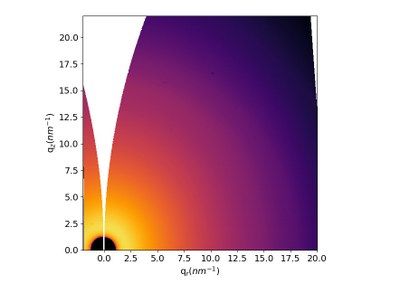Do you want to keep up to date? Subscribe to our newsletter. 1mail every 2months! |
 |
Cerdanyola del Vallès, 17th January 2021. Plants are amazing machines: not only they are solar-powered and convert carbon dioxide into chemical energy, but they are also capable of producing cellulose, the most abundant biopolymer on Earth, and can self-repair via tissue regeneration. All these factors make plants the perfect candidates for developing biohybrid technological systems, integrating smart materials and devices into their structure.
In a recent publication, the team led by researcher Eleni Stavrinidou from the Linköping University (Sweden) has presented a study about biohybrid plants with an electronic root system. They found out how to integrate circuits and electrochemical devices into the plants without damaging them, so that they can continue to grow and develop, and use them as supercapacitors or electronic sensors.
The results pave the way for using roots for energy storage and the creation of a root-based supercapacitor. Supercapacitors based on conductive polymers and cellulose offer an environmentally friendly alternative for energy storage that may also be more affordable than those currently in use. As a proof of concept, the research team built a supercapacitor where the roots served as the charge storage electrodes.
Another possible application of these plant-based systems are electronic sensors. For example, by adding a humidity sensor in the root, the information could be transmitted through the electronic root network to an intelligent system, which could act accordingly by increasing or decreasing the frequency of irrigation. These discoveries open the door to new intelligent stimulus-response applications.
This study is part of the European project Hybrid Electronics Based on Photosynthetic Organisms (HyPhOE), which involves several European institutions and aims to achieve a symbiosis between photosynthetic organisms and technology.

Figure 1. Bean plant before, during and after functionalization.
Turning plants into a cyborg
In order to make this a reality, roots of young plants were immersed in an oligomer solution and, after a while, a dark coating was observed on them. This coating indicated that oligomers had polymerized the roots, so that an extensive network of conductors had formed in the epidermis of the plant cells.
After a month, the roots were cut for testing purposes and results showed that the integrated mixed ionic–electronic conductors maintained their functionality while the plant continued to grow and mature. This confirmed that plants were not affected by the electronic functionalization but adapted to this new hybrid state by developing a more complex root system.
In addition, the electrical properties of the roots were characterized using current–voltage measurements at various interelectrode distances. The roots exhibited the typical behaviour of an ideal resistor and scientists discovered that the coating retained its conductivity after a month while the plant continued growing.
To get further insights on the organization and structure of the polymer on the roots, wide-angle X-ray scattering (WAXS) was performed at NCD-SWEET beamline of the ALBA Synchrotron. Scientists were able to observe that the polymer coating had a highly ordered structure, which is necessary for optimal electronic properties.
“The use of synchrotron light has been key for polymer structural research as we need to apply techniques with very high sensitivity due to the low amount of material in the sample”, said Eduardo Solano, scientist at the NCD-SWEET beamline of ALBA.

Figure 2. 2D wide-angle X-ray scattering of the plant roots performed at the NCD-SWEET beamline of ALBA.
Reference: Daniela Parker, Yohann Daguerre, Gwennaël Dufil, Daniele Mantione, Eduardo Solano, Eric Cloutet, Georges Hadziioannou, Torgny Näsholm, Magnus Berggren, Eleni Pavlopoulou and Eleni Stavrinidou. Biohybrid plants with electronic roots via in vivo polymerization of conjugated oligomers. Materials Horizons (2021). DOI: 10.1039/d1mh01423d
With the collaboration of Fundación Española para la Ciencia y la Tecnología. The ALBA Synchrotron is part of the of the Unidades de Cultura Científica y de la Innovación (UCC+i) of the FECYT and has received support through the FCT-20-15798 project.





